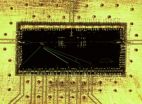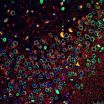(Press-News.org) Istanbul, Turkey – 20 October 2012: The Acute Cardiac Care Congress 2012 is the first annual meeting of the newly launched Acute Cardiovascular Care Association (ACCA) of the European Society of Cardiology (ESC). It takes place from 20 to 22 October in Istanbul, Turkey, at the Istanbul Lufti Kirdar Convention and Exhibition Centre (ICEC).
Primary percutaneous coronary intervention (pPCI), also called balloon treatment, opens the coronary vessel and is preferred over intravenous (IV) medicine (called thrombolysis) to dissolve blood clots in patients with heart attacks. To deliver this care, patients must be transported to a hospital that can provide balloon treatment. This requires well functioning treatment networks which integrate the pre-hospital and in-hospital phases of patient management so that even patients in remote areas receive high quality treatment that adheres to ESC Clinical Practice Guidelines.
"Transporting patients to hospitals with balloon treatment capacity often involves bypassing local hospitals in the vicinity of the patient," said Dr Mikkel M. Schoos from the University Hospital of Copenhagen, Denmark. "Pre-hospital triage involves digital transmission of the ambulance electrocardiogram (ECG) using telemedicine to the attending cardiologist at the hospital with the balloon capacity who can decide if the patient needs balloon treatment."
He added: "In this way, patients can be referred directly to the hospital that can perform balloon treatment, without first being seen in a local emergency room. This saves important time. We know from previous studies that reduced time to treatment equals greater salvage of the heart tissue near the blood clot after a heart attack."
Dr Schoos' study investigated the quality of these treatment networks in Denmark. The researchers found that 75% of all patients can be transferred directly to hospitals with balloon treatment capacity using pre-hospital triage.
But even when well functioning pre-hospital triage with telemedicine is in place, for 25% of patients it is not possible to deliver treatment within the time targets recommended by ESC Clinical Practice Guidelines if only ground ambulance is used. These are patients who live more than 100km (60 miles) away from the hospital with balloon treatment facilities and patients who go to a local hospital first.
The study showed that patients who are first brought to a local hospital lose important time and this increases their risk of death. "The time delay caused by first being taken to a local hospital that does not have the treatment facilities the patient needs is bad for the patient," said Dr Schoos. "Our study also shows that this system delay predicts all cause mortality in these patients who have big heart attacks. That means that a pit stop at a local hospital increases the risk of death."
There are several reasons why patients might go to the local hospital first. One is that the heart attack is not developed enough to be detected and diagnosed by the ambulance ECG. Dr Schoos is currently investigating ways to improve early diagnosis with ECG or biomarkers in the blood. A second reason could be a failure to transmit the ambulance ECG to the hospital. A third reason is that emergency medical personnel are not confident that the patient is stable enough for further transport and decide to do a pit stop at a local hospital.
Dr Schoos said: "By doing that they postpone the only right treatment. The majority of patients with acute heart attacks can be safely transported to a hospital with the needed treatment capacity, even if these hospitals are further away than smaller local hospitals."
He added: "Even though patients might get arrhythmias, which are bad heart rhythms, as a consequence of their blood clot, these can easily be treated in the ambulance by well educated emergency medical staff."
Ambulance staff must also be educated to perform and transmit the ECGs. "We need people with the right education in the ambulance for these treatment networks to function properly," said Dr Schoos.
Dr Schoos continued: "Patients and their relatives should call the emergency telephone number (112 in Denmark and Turkey) at the first symptoms of a heart attack. Valuable time is lost when patients drive themselves to emergency rooms or are driven there by relatives and they could develop a bad heart rhythm on the way. Ambulance staff can do an ECG straightaway, even in the patient's home, and ensure that patients are taken to the right hospital immediately."
He added: "Calling emergency is also important in countries that don't use pre-hospital triage with telemedicine because ambulance staff can give anti-thrombotic medicine to dissolve or stop the development of a blood clot."
To improve treatment for patients who live more than 100km away from a hospital with balloon treatment, Dr Schoos recommended arranging the catchment area of a hospital into geographical zones. This would make it possible to identify patients who might have long treatment delays because they live further away.
Geographical zone 1 could be for patients who live within 100km of the balloon treatment centre. These patients can receive pre-hospital triage with telemedicine. Geographical zone 2 is for patients more than 100km away. These patients could be transferred by helicopter, or be treated first with clot dissolving drugs (thrombolysis) followed by balloon treatment when they arrive at the centre.
In the second study, Dr Burcu Demirkan from the Turkiye Yuksek Ihtisas Hospital in Ankara, Turkey, investigated the factors influencing the use of an ambulance among Turkish patients with an acute coronary syndrome (ACS).
"Until recently there was a limited ambulance service in Turkey but the Ministry of Health has now made it available for the whole country," said Dr Demirkan. "The service is free of charge and quicker than in the past. Despite these improvements most patients still prefer self transport instead of using an ambulance when they have acute chest pain."
For the study the researchers collected data from 330 patients with ACS from 2 hospitals (a state hospital without pPCI capability and an education and research hospital that could perform pPCI).
The study found that just 29% of patients went to hospital by ambulance. This was despite the fact that 68% of patients knew the emergency telephone number (112). There were no differences in age, gender and marital status between patients who called an ambulance and patients who did not.
Patients who called an ambulance had a higher level of education, greater knowledge of the risk factors for coronary artery disease, and greater awareness of the fact that chest pain is related to heart attack and patients should quickly seek medical care. These patients were also more likely to have ST-elevation myocardial infarction (STEMI) (as opposed to non-STEMI), vertigo, syncope/near syncope, nausea, vomiting and more severe chest pain.
Among patients who did not use an ambulance, 37% were given a lift, 14% drove their own car, 26% took a taxi, 12% used public transport and 11% walked to the hospital.
Most patients (whether they used an ambulance or did not) were accompanied by family members or friends during transportation to the hospital.
Dr Demirkan said: "Less than one third of Turkish ACS patients used an ambulance for transportation to the hospital even though this service is free. This rate was lower than rates from previous studies in European countries and Australia but similar to rates in China."
She added: "The perception of symptoms as not serious or not of cardiac origin was the most common reason for not calling an ambulance. However among the patients who considered the symptoms to be serious, most of them thought that self transport would be faster. Contrary to the assumption of these patients, we found that ambulance users arrived at the hospital more quickly."
Dr Demirkan continued: "Instead of using an ambulance most of our patients used transportation that was unsafe and inappropriate for ACS patients, who urgently need reperfusion therapy. This situation was due to patients' misperceptions about the symptoms of a heart attack or false assumptions that self transport would be quicker."
She concluded: "Our study improves understanding of the reasons why patients do not call an ambulance and will help with planning health education programmes to increase ambulance use. Such programmes should teach patients about the characteristics of chest pain related to heart attack and the importance of calling 112 when they experience these symptoms."
### END
Calling an ambulance improves heart attack survival
Patients with chest pain who call an ambulance have quicker, more appropriate treatment and better survival
2012-10-20
ELSE PRESS RELEASES FROM THIS DATE:
Coronary angioplasty improves cardiac arrest survival
2012-10-20
Istanbul, Turkey – 20 October 2012: Coronary angioplasty improves survival in all patients with out of hospital cardiac arrest, according to research presented at the Acute Cardiac Care Congress 2012. The study was presented by Dr Annamaria Nicolino from the Santa Corona General Hospital in Pietra Ligure, Italy.
The Acute Cardiac Care Congress 2012 is the first annual meeting of the newly launched Acute Cardiovascular Care Association (ACCA) of the European Society of Cardiology (ESC). It takes place during 20-22 October in Istanbul, Turkey, at the Istanbul Lufti Kirdar ...
Using human stool to treat C. diff is safe, effective
2012-10-20
DETROIT – A novel therapy that uses donated human stool to treat the deadly and contagious
C.diff infection is safe and highly effective, according to a Henry Ford Hospital study.
Researchers found that 43 of 49 patients recovered swiftly after treatment and had no adverse complications from C.diff three months later. Treatment is performed either through a nasogastric tube or colonscopy on an outpatient or inpatient basis.
Mayur Ramesh, M.D., a Henry Ford Infectious Diseases physician and senior author of the study, says the treatment, while appearing unconventional, ...
Study: Optimal treatment duration for MRSA-related pneumonia
2012-10-20
DETROIT – The national practice guideline for treating MRSA-related pneumonia is seven to 21 days. A Henry Ford Hospital study found that effective treatment can be done in half the time.
Researchers found that 40 percent of patients were treated for eight to 13 days on a therapy of the antibiotics vancomycin or linezolid, and had the highest survival rate.
The Henry Ford study is believed to be the first to evaluate the length of treatment for MRSA-related pneumonia.
The study is being presented Friday at the annual Infectious Diseases Society of America meeting ...
Weight loss does not lower heart disease risk from type 2 diabetes
2012-10-20
Intervention stopped early in NIH-funded study of weight loss in overweight and obese adults with type 2 diabetes after finding no harm, but no cardiovascular benefits
An intensive diet and exercise program resulting in weight loss does not reduce cardiovascular events such as heart attack and stroke in people with longstanding type 2 diabetes, according to a study supported by the National Institutes of Health.
The Look AHEAD (Action for Health in Diabetes) study tested whether a lifestyle intervention resulting in weight loss would reduce rates of heart disease, stroke, ...
Breakthrough offers new route to large-scale quantum computing
2012-10-20
In a key step toward creating a working quantum computer, Princeton researchers have developed a method that may allow the quick and reliable transfer of quantum information throughout a computing device
The finding, by a team led by Princeton physicist Jason Petta, could eventually allow engineers to build quantum computers consisting of millions of quantum bits, or qubits. So far, quantum researchers have only been able to manipulate small numbers of qubits, not enough for a practical machine.
"The whole game at this point in quantum computing is trying to build a ...
Take control! Exploring how self-discipline works and how we might boost it
2012-10-20
Converging scientific evidence – not to mention a great deal of life experience – tells us that self-control is an important ability. It helps us keep our cool, get things done, and resist the things that tempt us. Scientists believe that gaining a clearer understanding of how self-control works could provide critical insights into addressing some of the large-scale problems facing society today, including obesity and addiction.
Numerous studies have found evidence for the idea of self-control as a limited resource, but emerging research suggests that this model may not ...
Salk scientists pinpoint key player in Parkinson's disease neuron loss
2012-10-20
LA JOLLA, CA---- By reprogramming skin cells from Parkinson's disease patients with a known genetic mutation, researchers at the Salk Institute for Biological Studies have identified damage to neural stem cells as a powerful player in the disease. The findings, reported online October 17th in Nature, may lead to new ways to diagnose and treat the disease.
The scientists found that a common mutation to a gene that produce the enzyme LRRK2, which is responsible for both familial and sporadic cases of Parkinson's disease, deforms the membrane surrounding the nucleus of a ...
Daily vibration may combat prediabetes in youth
2012-10-20
AUGUSTA, Ga. – Daily sessions of whole-body vibration may combat prediabetes in adolescents, dramatically reducing inflammation, average blood glucose levels and symptoms such as frequent urination, researchers report.
In mice that mimic over-eating adolescents headed toward diabetes, 20 minutes of daily vibration for eight weeks restored a healthy balance of key pro- and anti-inflammatory mediators and was better than prescription drugs at reducing levels of hemoglobin A1c, the most accurate indicator of average blood glucose levels, said Dr. Jack C. Yu, Chief of the ...
Disk galaxies formed gradually, astronomers find from images, computer simulations, and spectra
2012-10-20
Spectroscopic observations of distant galaxies taken with the 10-meter telescopes at the W. M. Keck Observatory on Hawaii, when combined with images taken by the Hubble Space Telescope plus supercomputer simulations to help interpret the observations, together reveal a major surprise: that a standard assumption about the evolution of galaxies is not correct.
Astronomers had thought that disk galaxies (like our own Milky Way) had largely finished forming by about 8 billion years ago, as indicated by the rates at which stars are formed in the Universe. Therefore, many astronomers ...
Science reveals the power of a handshake
2012-10-20
New neuroscience research is confirming an old adage about the power of a handshake: strangers do form a better impression of those who proffer their hand in greeting.
A firm, friendly handshake has long been recommended in the business world as a way to make a good first impression, and the greeting is thought to date to ancient times as a way of showing a stranger you had no weapons. Now, a paper published online and for the December print issue of the Journal of Cognitive Neuroscience on a study of the neural correlates of a handshake is giving insight into just ...
LAST 30 PRESS RELEASES:
Press registration is now open for the 2026 ACMG Annual Clinical Genetics Meeting
Understanding sex-based differences and the role of bone morphogenetic protein signaling in Alzheimer’s disease
Breakthrough in thin-film electrolytes pushes solid oxide fuel cells forward
Clues from the past reveal the West Antarctic Ice Sheet’s vulnerability to warming
Collaborative study uncovers unknown causes of blindness
Inflammatory immune cells predict survival, relapse in multiple myeloma
New test shows which antibiotics actually work
Most Alzheimer’s cases linked to variants in a single gene
Finding the genome's blind spot
The secret room a giant virus creates inside its host amoeba
World’s vast plant knowledge not being fully exploited to tackle biodiversity and climate challenges, warn researchers
New study explains the link between long-term diabetes and vascular damage
Ocean temperatures reached another record high in 2025
Dynamically reconfigurable topological routing in nonlinear photonic systems
Crystallographic engineering enables fast low‑temperature ion transport of TiNb2O7 for cold‑region lithium‑ion batteries
Ultrafast sulfur redox dynamics enabled by a PPy@N‑TiO2 Z‑scheme heterojunction photoelectrode for photo‑assisted lithium–sulfur batteries
Optimized biochar use could cut China’s cropland nitrous oxide emissions by up to half
Neural progesterone receptors link ovulation and sexual receptivity in medaka
A new Japanese study investigates how tariff policies influence long-run economic growth
Mental trauma succeeds 1 in 7 dog related injuries, claims data suggest
Breastfeeding may lower mums’ later life depression/anxiety risks for up to 10 years after pregnancy
Study finds more than a quarter of adults worldwide could benefit from GLP-1 medications for weight loss
Hobbies don’t just improve personal lives, they can boost workplace creativity too
Study shows federal safety metric inappropriately penalizes hospitals for lifesaving stroke procedures
Improving sleep isn’t enough: researchers highlight daytime function as key to assessing insomnia treatments
Rice Brain Institute awards first seed grants to jump-start collaborative brain health research
Personalizing cancer treatments significantly improve outcome success
UW researchers analyzed which anthologized writers and books get checked out the most from Seattle Public Library
Study finds food waste compost less effective than potting mix alone
UCLA receives $7.3 million for wide-ranging cannabis research
[Press-News.org] Calling an ambulance improves heart attack survivalPatients with chest pain who call an ambulance have quicker, more appropriate treatment and better survival




